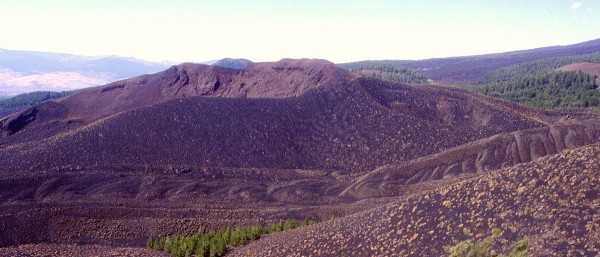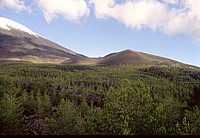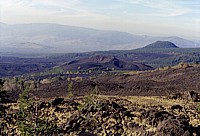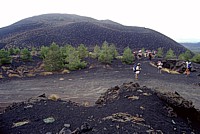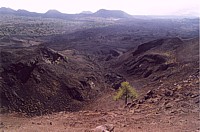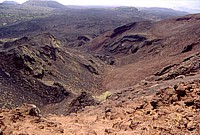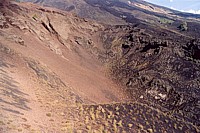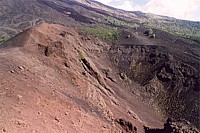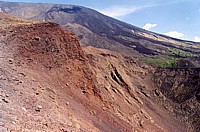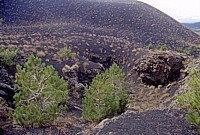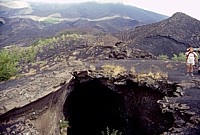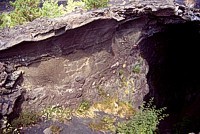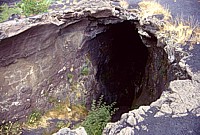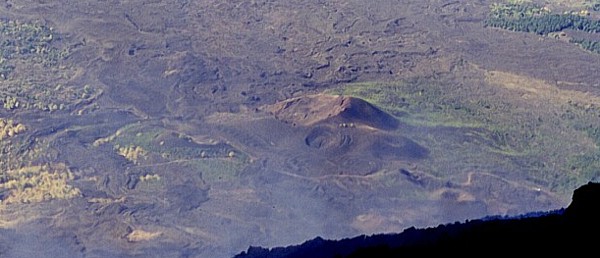| Etna
index |
||
| Geology | Geological history | Cones and craters |
| Eruptive characteristics | Eruptions before 1971 | Eruptions since 1971 |
| Etna and Man | References | Web sites |
| Weather forecasts | FAQ | Latest news |
Mamma
Etna's countless children
Monte Nunziata
W flank, 14.949533° E, 37.762034° N
Summit elevation: 1810 m (E rim of crater)
![]()
Monte
Nunziata is one of the more recent cones on Etna's west flank, formed
during a relatively short but intense eruption lasting from 31 October
until 22 November 1832. The vents around which Monte Nunziata was eventually
built up opened only on 3 November 1832, four days after the first lava
outbreak higher upslope. It is a relatively low but rather broad cone,
encircling a huge crater 250 x 300 m in diameter and open to the west,
where a large lava flow spilled out and extended for nearly 9 km in the
direction of the town of Bronte. As appears from contemporaneous descriptions,
this eruption must have been impressive, with an eruptive fissure nearly
2.5 km long and lava issuing in numerous spots. However, explosive activity
was strongest in the lowermost portion of the fissure, where fallout from
broad lava fountains built the cone of Monte Nunziata. It is highest on
the western side of the gaping crater; immediately to the SE and NE lie
two smaller craters that probably formed as huge magma blisters exploded
through the flank of Monte Palestra. A similar phenomenon was observed
during the 2001 eruption on the southern side of the large pyroclastic
cone that grew at 2570 m elevation in a place formerly called Piano del
Lago.
The cone still bears little vegetation, although reforestation is under
way on its lower north flank, and a single pine tree is standing on the
steep northeastern inner crater wall. A spectacular lava cave lies immediately
upslope (northeast) of Monte Nunziata, which represents a lava tube formed
during the 1832 eruption; the lava was fed from one of the higher vents
on the eruptive fissure active during this eruption.
I have visited Monte Nunziata several times in 2001, 2002 and 2003. The
best photographs of it were obtained during the 2001 and 2002 visits and
are shown on this page.
Copyright © Boris Behncke, "Italy's Volcanoes: The Cradle of Volcanology"
Page set up on 21 February 2004

